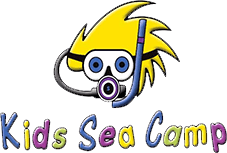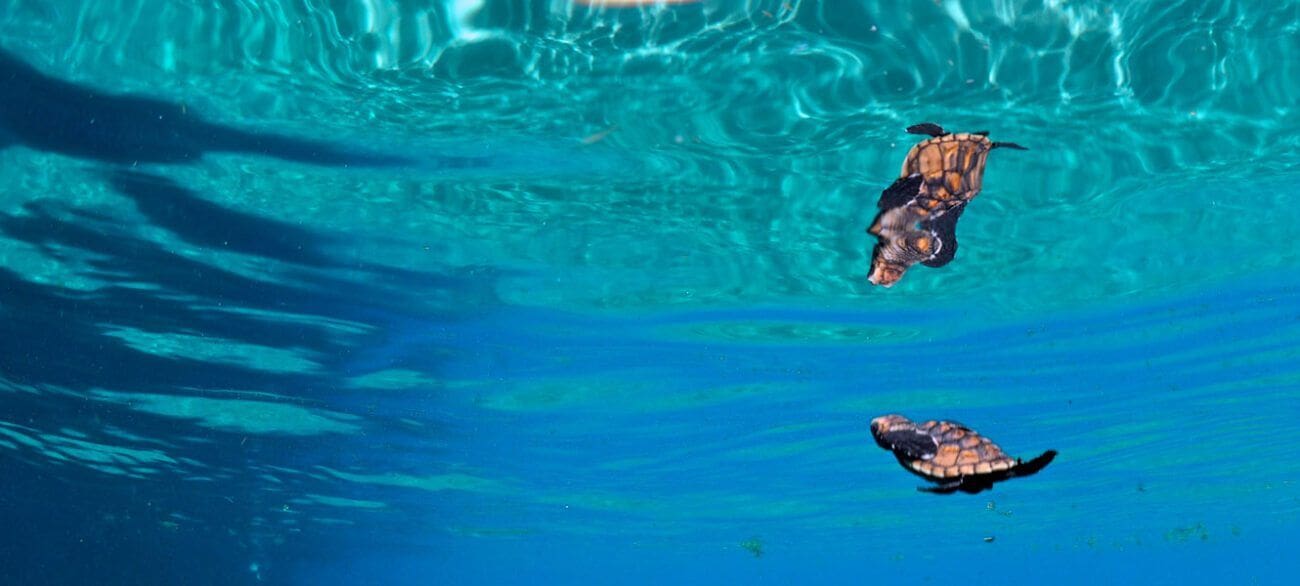A rare experience for children to witness
By Gigi Merlusca
”A magical gift of a baby turtle hatch at Anse Chastanet during Kids Sea Camp”
It was the first night of Kids Sea Camp under the stars of St Lucia. Mother Nature gave us a magical welcome that night. I was thrilled and looking forward to leading the kids through this rare and unique adventure. Our days would be packed with learning about the ocean and a list of fun Anse Chastanet activities. However, Mother Nature planned her learning and fun activity on this particular Kids Sea Camp trip for all the kids who would become her underwater world’s future ambassadors and protectors.
Margo and Tom, the owners of Kids Sea Camp, their photo pro-Brad, and Instructor Woody, who brought their moms along on this memorable trip, sat down after introductions. I introduced the chef and GM, myself, and my dive team and started the Q & A. Guests were excited for the next day’s diving and having fun with newfound friends. At Anse Chastanet, our dinners are set up right on the beach in the beautiful beach restaurant on the water’s edge. It’s lit with glimmering lanterns reflected in the shimmering light patterns along the shoreline. I heard a little girl exclaimed she had found a baby turtle. I knew the nest we had been watching was close to ready, but tonight, in the bright moonlight with all the children present, was the night.
A magical night
I gathered all the kids and parents and spoke to them about what they would witness. “Welcome to what promises to be a magical night of wonder for everyone! Tonight, we have a Kids Sea Camp miracle taking place. We will be able to watch the baby turtles come to the surface of the sand and make their way to the ocean. It’s an incredible journey, and I’m thrilled to share it with you.”
The kids and their parents were on the edge of their seats. “What’s the most exciting part?” asked Noah.
“The most exciting part,” I replied, “is seeing how these tiny hatchlings find their way to the ocean. They face many challenges, but their determination is truly inspiring. We’ll learn about their journey tonight and see it unfold before our eyes.”

As dusk was not yet night, we stood around the nesting area, where gentle red lights lit the beach to avoid disturbing the baby turtle hatch. We waited , hoping the turtles would wait for the darkness to protect them. I explained to the kids, “Sea turtles usually hatch at night. The little ones will emerge from their nests and head toward the water, guided by the moon’s natural light.” The beach was lit, and there was a lot of artificial light. With her notebook ready, Ella asked, “How do the turtles know where to go?”
“Great question,” I said, “They are guided by the reflection of the moonlight on the water. The natural light helps them find their way to the ocean, away from predators and toward safety.”
We settled in, eyes scanning the sand for more signs of movement. The beach was quiet except for the rhythmic sound of the waves and the occasional call of a night bird.
Baby turtles on the beach
Suddenly, another soft mound of sand began to shift. The kids held their breath as tiny heads poked through the sand. It was a nest of baby leatherback sea turtles beginning their incredible journey. I saw the excitement on their faces and whispered, “Look, there they are!”
The hatchlings, no bigger than a child’s hand, began to wriggle and make their way across the sand. Their tiny flippers flapped and moved in unison as they instinctively followed the moonlight reflecting on the water. Ava clapped her hands softly, “They’re so tiny and determined!”
Parents had cameras ready, capturing every moment of the baby turtle hatch. I watched as the children, who had been making jokes earlier, were now wholly absorbed in the scene. “This is amazing,” one little boy said, his voice filled with awe.
They faced a few challenges as the 98 hatchlings approached the water’s edge. Gulls swooped down, and the children gasped. I reassured them, “Don’t worry. Despite the challenges, Nature has its way, and many of these hatchlings will make it to the water.” It was incredible how the birds knew what would happen in the next few moments. Their calls got louder as if they were ringing a bell.

The hatchlings continued to push up through the sand to begin their journey, some moving faster than others. I noticed a little girl watching one particular hatchling that seemed to struggle, and it had flipped over in the sand. A gull came in and dived to pick it up. “Can we help it?” she asked, her concern evident.Leatherback turtles are endangered; generally, only one in a thousand will reach adulthood. 10-15% are eaten by crabs, birds, and reptiles on the beach, and only 25% survive their first few days in the ocean. Witnessing a baby hatch turtle of baby leatherbacks was an extremely rare moment. As adults, they can weigh up to 2,000 lb and 6.5′. In St. Lucia, as in most of the Caribbean, we have annual occurrences of The green turtles and Hawksbills laying each June and hatching each July & August.
The leatherback population has decreased worldwide by 40%. They have been known to return to Grand Anse Beach in St. Lucia. However, due to sand mining and poaching, they have migrated to other places around the island, and this year, Anse Chastanet House Beach was the place.
As each tiny turtle rose out of the sand, we quickly collected them and put them in safety tubs to be released in a safer turtle-friendly area, where they could not be poached or eaten and had a better chance of survival.

I smiled at the kids, proud of their empathy and understanding. “You’ve all witnessed an extraordinary moment and participated in protecting future generations of leatherbacks. These hatchlings will safely take their first swim into the ocean over the next few evenings. This part is just the beginning for them, and It’s a lesson to us on the importance of protecting their environment.”
Talking about turtle conservation
During the next two days, turtle conservation was our topic, and the baby turtles were released safely into the ocean. As each of the 98 hatchlings disappeared into the blue, we gathered to reflect on our unforgettable experience. In closing, I shared my thoughts. Those baby turtles have shown us the power of determination and the importance of protecting them and their habitat.”
The kids shared their thoughts and feelings, too. They each named a little turtle and wished it an easy journey and a safe return someday. Sarah, still excited, said, “I can’t believe we saw them hatch and go to the sea. I want to help sea turtles and ensure they all have a safe place to live.”
The other children nodded in agreement. At this Kids Sea Camp, as they do each year in St. Lucia, kids learn firsthand about turtle challenges, pollution, plastic, sand mining, and habitat destruction.
Abby, usually full of jokes, was reflective. “It was amazing to see how hard they work just to rise out of the sand. It makes me want to do more to help save their habitat.”
I listened to their comments with a smile. “I’m proud of each of you. This experience shows how important it is to care for our ocean environment. You’ve all taken a big step as future ocean protectors.”
We did a beach cleanup that week, ensuring the beach was left pristine and ready for next year’s hatchlings to be buried. Who knew that even the artificial lights made a difference and how important the stars shining brightly above are to turtles? Anse Chastanet has always championed conservation in St. Lucia. They created one of the first marine sanctuaries in St. Lucia.
Tom and Margo always say, “Kids Sea Camp creates memories to last a lifetime,” and that one will be forever in my heart. I felt honored to have shared it with such a wonderful group of kids and their parents. I hope that week, those experiences will have created voices and protectors for the future, and maybe a few more baby turtles will hatch.
Gigi Merlusca, PADI Staff Instructor and former manager of Scuba St. Lucia at Anse Chastanet

